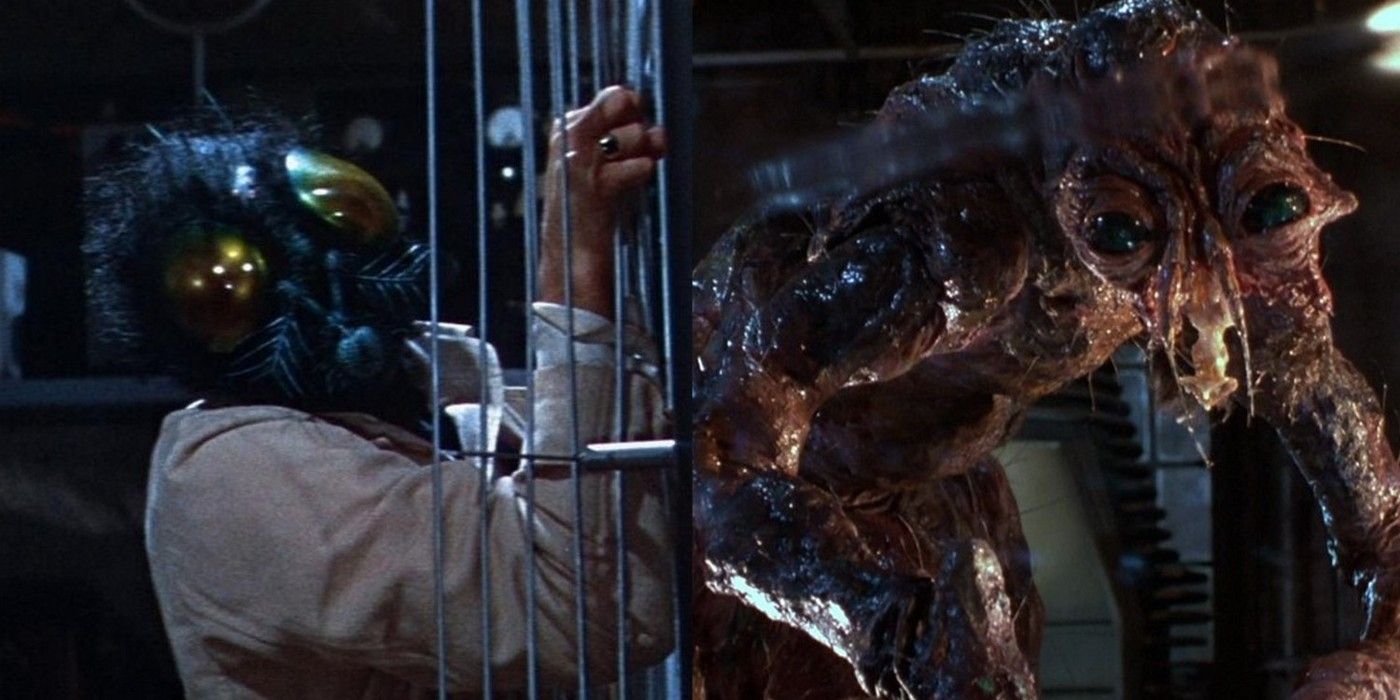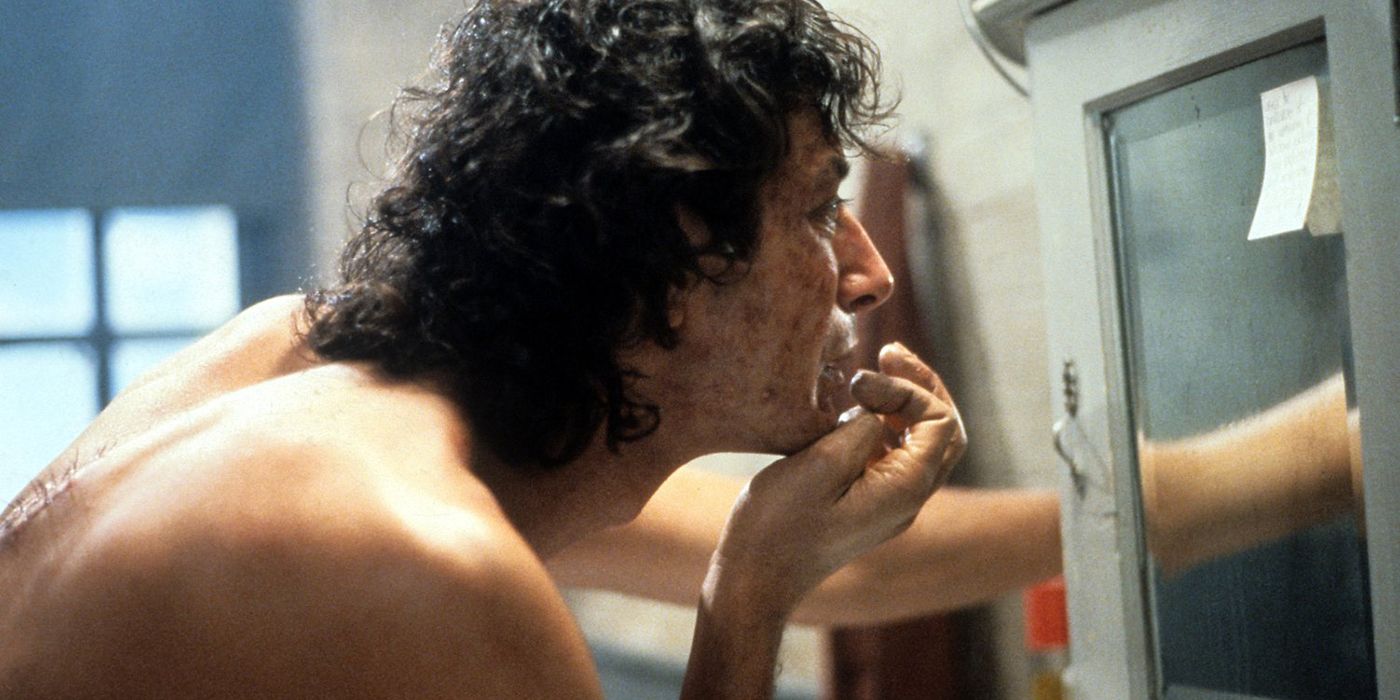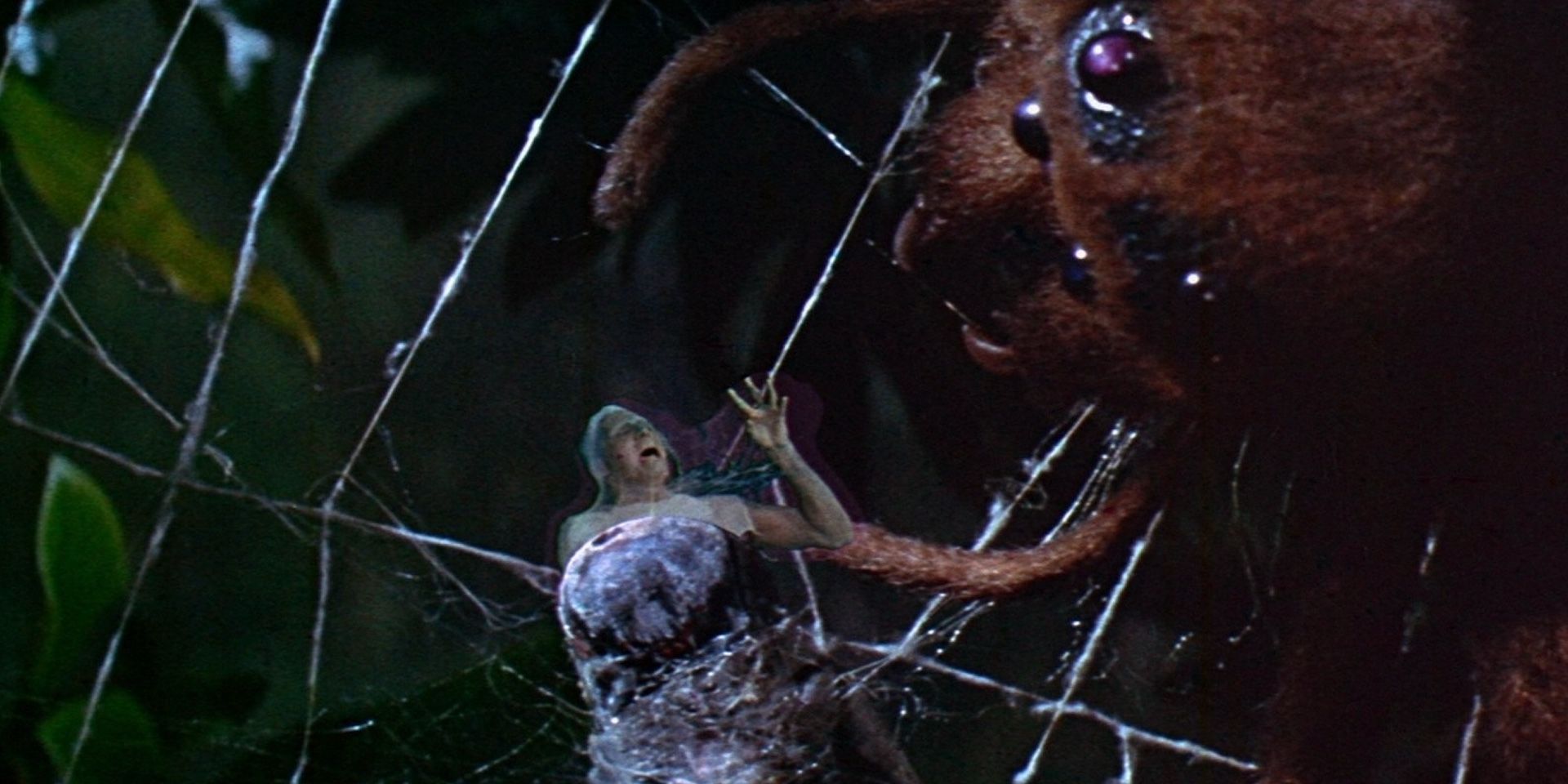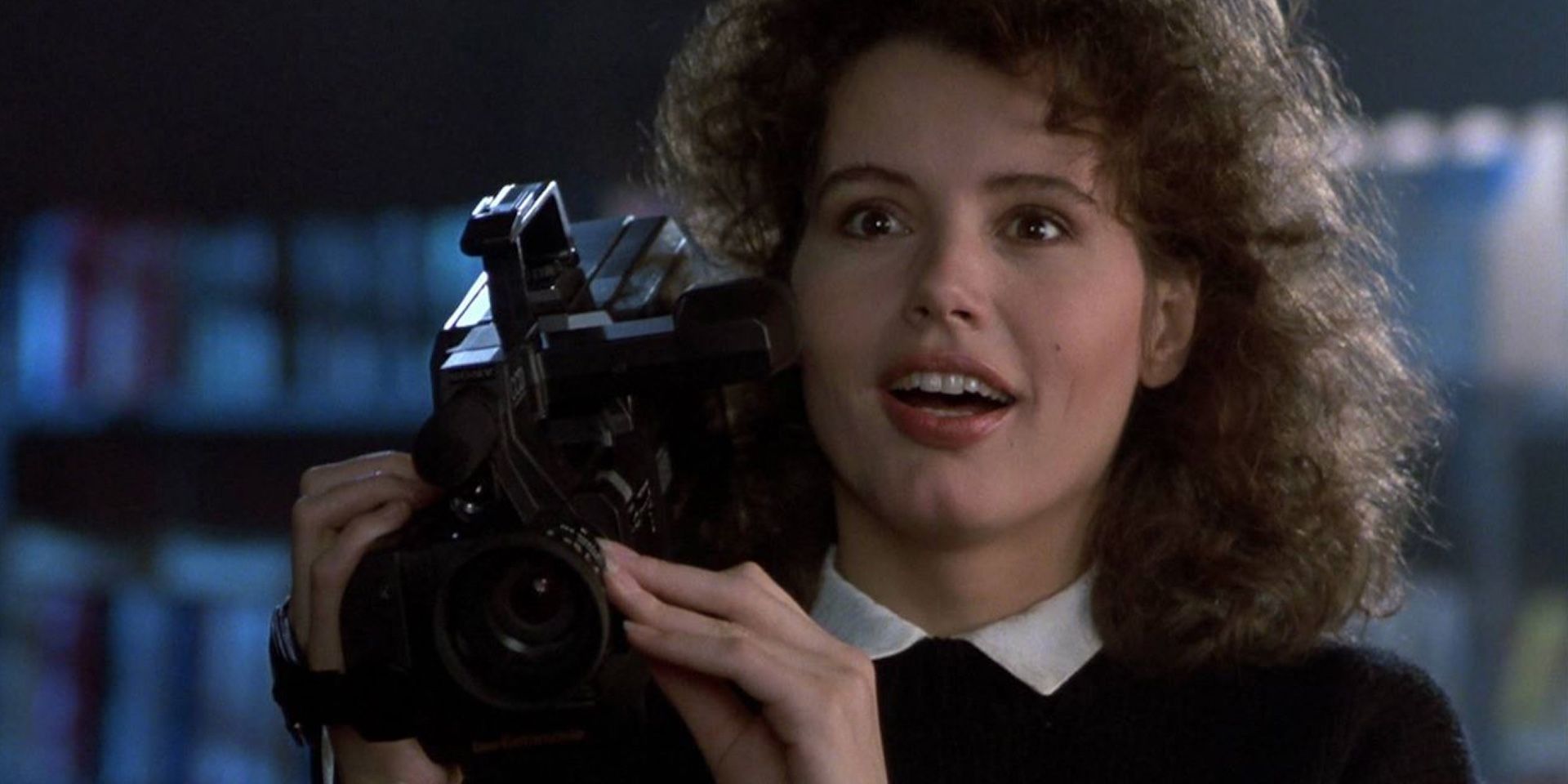David Cronenberg's 1986 remake of The Fly pays homage to the 1958 original while building upon its horror concepts and themes. Both films were inspired by George Langelaan's eponymous 1957 short story, and include egocentric male characters, whose un-checked behavior leads to disastrous consequences. For the '80s adaptation, Cronenberg provided his own spin on the body horror premise and tweaked the character arc for the primary female lead, in collaboration with co-screenwriter Charles Edward Pogue. The result: an innovative classic of '80s horror that remains a fixture of pop culture, evidenced by an October 2020 reference on Saturday Night Live.
In retrospect, the 1958 version of The Fly benefits from the casting of horror icon Vincent Price. He stars as Montreal native François Delambre, whose scientist brother André (Al Hedison) dies after being crushed by a hydraulic press. The victim's wife Hélène (Patricia Owens) admits to the crime, but her demeanor leads prosecutors to believe that she may have some psychological issues, or could be emotionally traumatized after potentially witnessing her husband's suicide. She later recalls how André developed technology (the disintegrator-integrator) that could instantaneously transport atoms from one place to another. In a major malfunction, the scientist's atoms are mixed with a pesky fly; a moment that leads to some gory body horror. The Fly (1958) was directed by Kurt Neumann—who died five weeks after the film's release—and adapted for the big screen by James Clavell.
Cronenberg's 1986 version of The Fly keeps the basic narrative premise, with Jeff Goldblum starring as a quirky scientist named Seth Brundle. In contrast to the original film, this character is single and ready to mingle - in fact, The Fly begins in media res as Seth boasts about his work to Toronto journalist Veronica "Ronnie" Quaife (Geena Davis). From there, Cronenberg amplifies everything - the romance, the comedy, the stakes. Most importantly, the iconic Canadian filmmaker delivers the goods with body horror that's on par with his previous classics like Rabid, Scanners, and Videodrome (to name a few). Here's how The Fly (1986) improves upon its late-'50s predecessor.
Cronenberg's The Fly Is More Horrific
Whereas The Fly (1958) begins with André Delambre's violent death (and a spectacular reaction by Torben Meyer as Gaston), Cronenberg's update initially plays out like a weird romantic comedy. On one level, the 1986 film immediately introduces audiences to the main players and makes their motivations clear: Seth wants respect and exposure, Ronnie wants a good story. Cronenberg also subverts expectations with his work, as his tale isn't a murder mystery, but rather an account of Seth's physical/psychological transformation and Ronnie's attempts to process the implications.
In Neumann's 1958 film, the character reactions are arguably more memorable than the scares. The aforementioned Meyer delivers a camp-like reaction upon finding André's body, which - to be fair - was probably the result of his silent movie upbringing. Surprisingly, The Fly (1958) doesn't have a proper scare until the 58-minute mark when Hélène spots André's's deformed hand, at least if you don't count the moment when Dandelo the cat is zapped away to an unknown location - maybe "space," according to the scientist. As Hélène, Owens has another big screaming moment during the fly head reveal, but it unfortunately overrides the actual visual of André. The final moments of The Fly might've been shocking to audiences in 1958—a tiny fly version of André is eaten by a spider while screaming "Help me!"—but the moment is grounded in fantastical science fiction rather than visceral psychological horror.
Cronenberg's horror in The Fly stems from the fact that Ronnie shares Seth's pain. At first, there's some professional tension due to Seth's bizarre demeanor and statements at his lab. Then, there's some sexual tension when the pair begin a romantic relationship. Note: the 1986 version of The Fly can and should be criticized for propagating the cinematic trend of female journalists having loose morals. After developing the character arcs for both leads, Cronenberg forces both Ronnie and the audience to confront Seth's physical and psychological deterioration, which makes a statement like “I’d like to become the first insect politician" both comedic and tragic.
As the film progress, the body horror isn't used a gimmick but rather as a way to symbolize the broken dreams of both Seth and Ronnie. There's no easy way to end this particular relationship, and Cronenberg unsurprisingly ends The Fly with a violent and messy confrontation that's more about mercy than malicious intent.
The Fly (1958) Hasn't Aged Well
The Fly (1958) naturally hasn't aged well due to technological advancements. However, there are practical creative choices that detract from the viewing experience. The most obvious example is the final "Help me!" reveal, which is problematic because of its relation to the overall tone of the movie. It oddly works in the sense that viewers won't forget a miniature fly version of André begins gobbled up, but it feels somewhat like a cop-out when the rest of the film is more focused on traditional suspense rather than steady horror. Neumann could not have known how the final reveal would hold up, but someone should've told him to re-consider the "Help me!" line.
In fact, there are several lines of dialogue in The Fly (1958) that feel out of place. Early on, an investigator tells Hélène that “You say you killed your husband. That means you murdered him," which doesn't quite have a dry humor element that audiences can pick up on. Later on, the same character states "I’m only a policeman not a science fiction enthusiast," which does indeed feel comedic, suggesting that the filmmakers were trying to add a bit of low-key humor throughout. Whatever the case, it seems Neumann could've used some more takes and some more eyeballs on the final cut in the editing room. Overall, The Fly (1958) often loses its rhythm from sequence to sequence, the result of stiff acting and questionable dialogue.
Cronenberg Upgraded The Fly From B-Movie To Blockbuster
The Fly (1958) may have its flaws, but the fact remains that it's a late-50s B-movie, which is indeed part of its aesthetic appeal, and that same concept applies to Cronenberg's early work. He wrote, produced, and directed his 1969 feature debut Stereo, a relatively low-budget Canadian horror movie that preceded his later collaborations with lead actor Ronald Mlodzik in Shivers and Rabid. By 1981, Cronenberg innovated his craft with the famous head explosion effect in Scanners, which convinced Hollywood producers to hand over the appropriate amount of money for bigger and hopefully better horror movies.
After directing Videodrome (starring Blondie's Debbie Harry) and The Dead Zone (a Stephen King adaptation), Cronenberg essentially made his "breakthrough" film with The Fly, even though he was already widely respected within the horror community. The film had a reported budget of approximately $9 to 15 million, which obviously wouldn't be considered "blockbuster" money in the present. However, Cronenberg's production costs for The Fly are indeed similar to some of 1986's highest-grossing films, as Tony Scott's Top Gun was made for $15 million and Pretty in Pink had a budget of $9 million.
By choosing to adapt The Fly with Hollywood money, David Cronenberg showed his appreciation for the 1958 movie and strengthened its legacy by making a faithful yet better adaptation, one that was both a critical and commercial success with cutting-edge visual effects.




